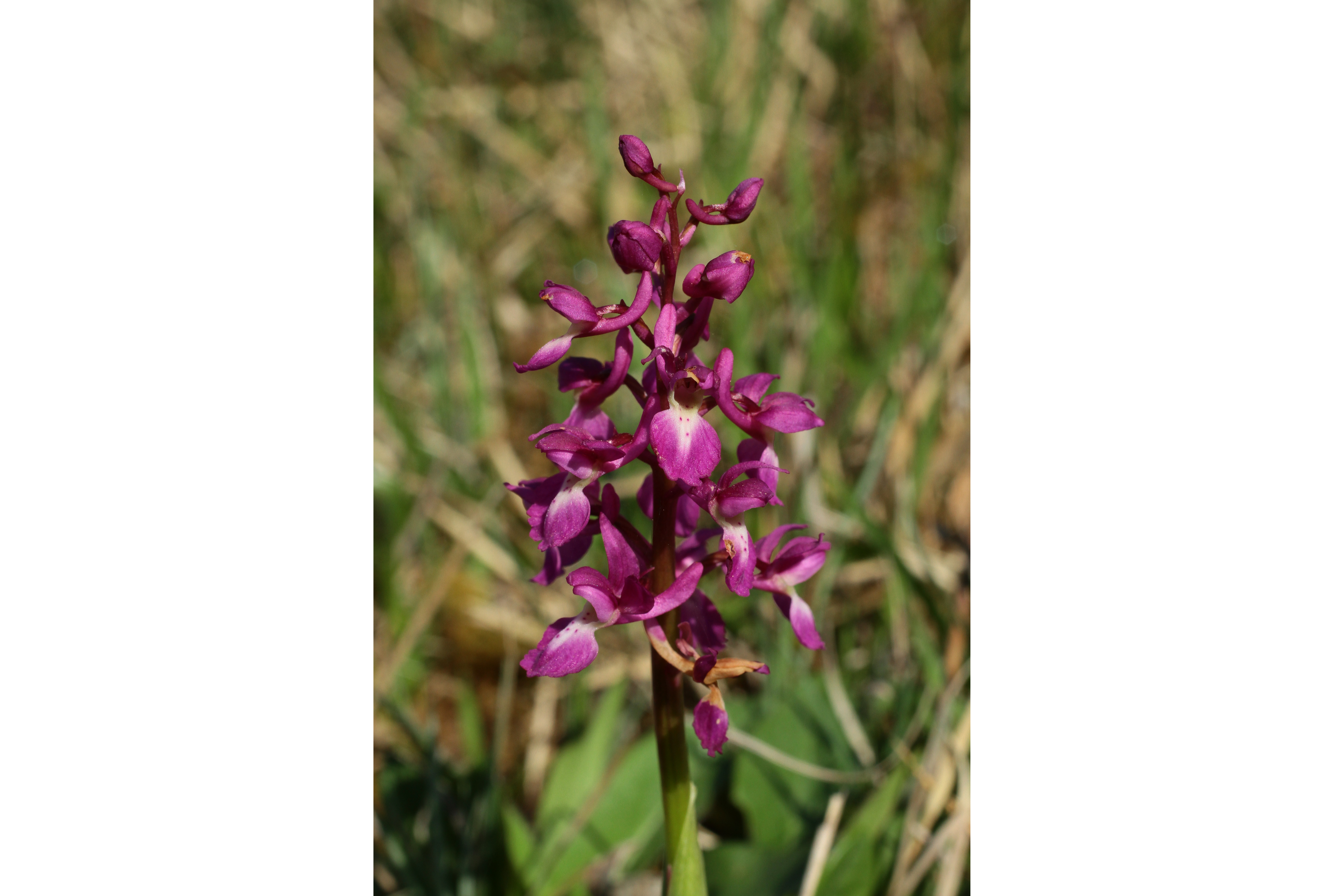Male orchid
(Orchis mascula)

Description
Orchis mascula, commonly known as the Early-purple Orchid or the Male Orchid, is a perennial orchid species belonging to the Orchidaceae family. It is native to Europe, the Mediterranean region, and parts of Western Asia, where it grows in a wide variety of habitats, including meadows, grasslands, woodlands, and forest edges. The name Orchis is derived from the Greek word "orchis," which means testicle, as the shape of the orchid's root resembles the male reproductive organs. The species name mascula, meaning male, refers to the form of the flowers. Appearance Orchis mascula can grow up to 50 cm in height, with a single stem that is covered with lanceolate leaves, which are arranged in a basal rosette. The leaves are dark green and glossy, with prominent veins and a smooth texture. The stem is topped by a dense spike of flowers that are densely packed and arranged in a cylindrical shape. The flowers of Orchis mascula are small, with a diameter of 1-2 cm, and are a vibrant purple color, which is where the common name "Early-purple Orchid" comes from. The flowers have three sepals and three petals, with the upper petal forming a hood over the column. The column, which contains the male and female reproductive organs, is curved and elongated and is covered with numerous small flowers. Habitat and Distribution Orchis mascula is a widespread species that is found in many parts of Europe, from the Atlantic coast to the Urals, and from Scandinavia to the Mediterranean. It is also found in the Middle East, including Turkey, Lebanon, and Israel. The plant is usually found in open areas such as meadows, grasslands, and woodland clearings, but it can also grow in shady forests. The species is not considered threatened globally, although it may be locally rare in some areas due to habitat loss and disturbance. Orchis mascula is protected by law in some countries, and it is illegal to pick or disturb the plants. Cultivation Orchis mascula is not typically cultivated, but it can be grown in a garden setting with the proper care. The plant prefers a sunny or partially shaded location with well-drained soil that is rich in organic matter. The soil should be kept moist but not waterlogged, and the plant should be fertilized with a balanced fertilizer every two weeks during the growing season. Propagation can be achieved by dividing the rhizomes in the autumn, just after the plant has finished flowering. The divided rhizomes should be planted immediately in a suitable location and kept moist until they are established. Ecology Orchis mascula is a highly adapted plant that has evolved to survive in a variety of habitats. It is pollinated by a variety of insects, including bees, hoverflies, and butterflies, which are attracted to the flower's nectar and color. The flowers of Orchis mascula also mimic the appearance of female insects, which may attract males seeking to mate. The plant has a symbiotic relationship with mycorrhizal fungi, which help the plant to absorb nutrients from the soil. The fungi form a network of threads that surround the plant's roots, allowing the plant to access nutrients that it would not otherwise be able to obtain. Orchis mascula is also an important food source for several species of moths and butterflies, which feed on the nectar and pollen of the flowers. The plant's leaves and roots have been used for medicinal purposes for centuries, and they are believed to have several healing properties, including as a treatment for rheumatism, toothache, and digestive disorders.
Taxonomic tree:







